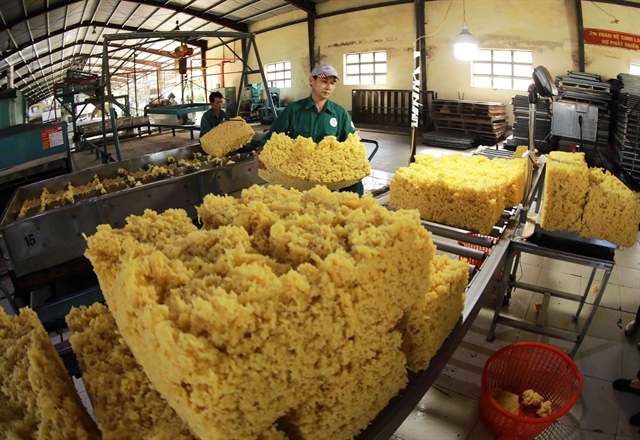At present, agricultural exports, such as rice, coffee and seafood, have steadily secured a stable place in major global markets.

Looking ahead to 2025, key agricultural products are expected to maintain their high export increase, after reaching impressive export growth in 2024.
Việt Nam's agricultural, forestry and fishery sector is poised for continued growth, with a projected export turnover of US$64-65 billion this year. This goal represents an increase from the $62.4 billion reached last year, signalling the sector's potential for further expansion.
At present, agricultural exports, such as rice, coffee and seafood, have steadily secured a stable place in major global markets.
The rice export is expected to bring in $6-6.5 billion this year, with a focus on high-quality and specialty varieties.
With favourite durian, bananas and dragon fruit, the agricultural sector estimated to gain $8.5-9 billion from vegetable and fruit exports.
The export of seafood, driven by shrimp, pangasius, and high-value processed products, is projected to reach $10.5-11 billion this year.
Meanwhile, processed wood exports are expected to get $17-18 billion, fueled by growing demand for sustainable products in key markets like the EU and the US.
According to Nguyễn Hoài Nam, deputy general secretary of the Việt Nam Association of Seafood Exporters and Producers, the fishery sector is expected to continue its considerable growth in 2025, potentially returning to the $11 billion export mark achieved in 2022.
Đặng Phúc Nguyên, general secretary of the Việt Nam Fruit and Vegetable Association, highlighted Việt Nam as a regional leading country in fruit and vegetable production.
With an increasingly stable supply and improved product quality, the sector is on track to set new records, projecting an annual growth rate of over 10 per cent compared to 2024.
Leveraging Free Trade Agreements (FTAs), improving product quality, and adopting advanced processing technologies will be factors that make Việt Nam's agriculture sector maintain high export growth this year.
FTAs like the Comprehensive and Progressive Agreement for Trans-Pacific Partnership (CPTPP), the EU-Việt Nam Free Trade Agreement (EVFTA), and the Regional Comprehensive Economic Partnership (RCEP) are expected to boost the quality of Vietnamese agricultural products and bring them to demanding global markets.
Phùng Đức Tiến, deputy minister of the Ministry of Agriculture and Rural Development (MARD), emphasised the importance of restructuring the agricultural sector, improving productivity and optimising the quality of products.
The ministry plans to focus on developing innovative production and business models, improving cooperation between producers, and linking production with global consumption chains.
Additionally, there will be a strong emphasis on research, technology transfer, and applying scientific advancements to improve agricultural practices.
The global shift towards organic products with transparent sourcing presents new opportunities for Việt Nam. Vietnamese producers promote deep processing offering a competitive edge in international markets.
Despite these positive forecasts, the agricultural sector still faces significant challenges in 2025. Among the main obstacles are fluctuations in the global market, rising trade barriers, and increasingly stringent quality standards in export destinations.
Nguyễn Quang Hiếu, deputy director of the MARD Plant Protection Department, said many countries were raising their quality standards, which could pose difficulties for Việt Nam's fragmented production systems. The agricultural sector's ability to meet these new demands would be crucial for sustainable growth.
One pressing concern was the potential for violations of international quality standards as businesses scale up to meet growing demand.
Hiếu noted that even a minor lapse in quality control could affect an entire shipment, damaging the reputation of Việt Nam's agricultural exports.
To ensure sustainable growth, the sector must focus on maintaining rigorous quality standards and addressing the challenges posed by market fragmentation.
Việt Nam's agricultural, forestry and fishery exports achieved a remarkable milestone in 2024, with a total value of $62.5 billion, marking a nearly 19 per cent increase compared to 2023.
The year 2024 saw significant contributions from seven key export items, each surpassing $3 billion in value. These included timber and wood products ($16.1 billion), vegetables and fruits ($7.1 billion), rice ($5.7 billion), coffee ($5.4 billion), cashew nuts ($4.3 billion), shrimp ($3.8 billion), and rubber ($3.2 billion). VNS





